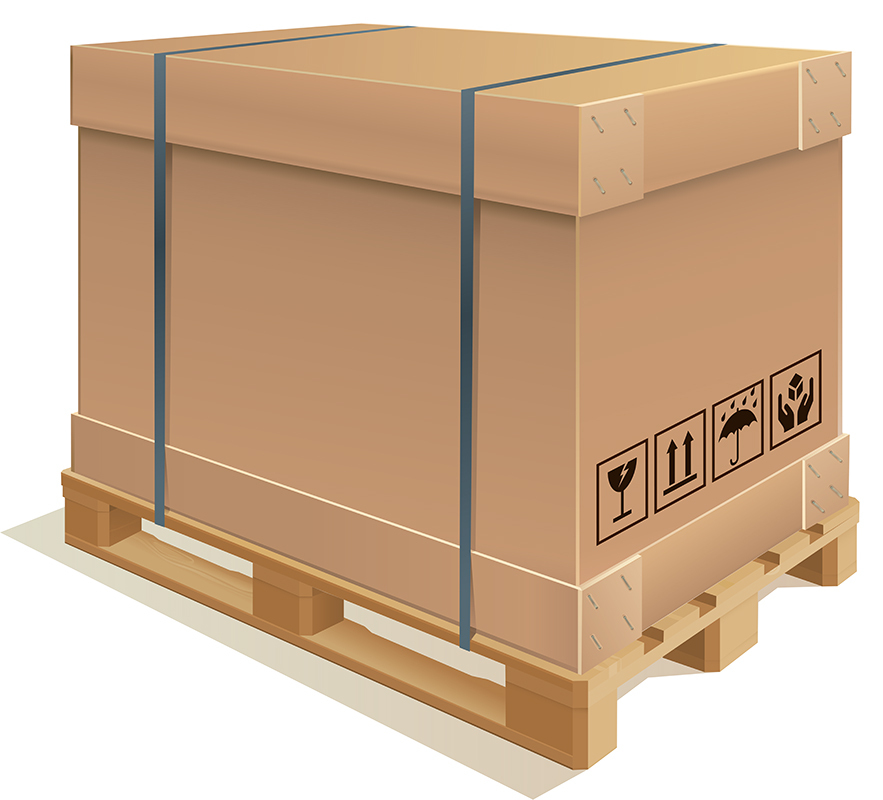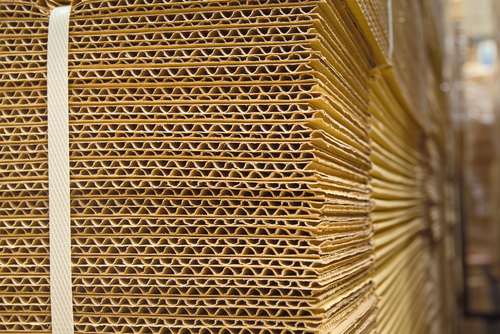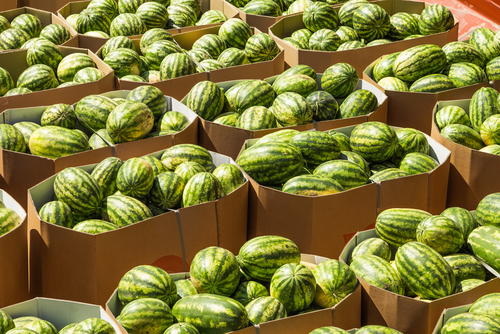
Gaylord boxes are built for heavy-duty use. They’re strong, affordable, and practical, serving industries that need bulk packaging for items like produce, recyclables, or clothing. Their durability makes them a trusted option in shipping and storage.
Introduction to the Box from a Premier Gaylord Container Company
You’ve probably seen them at your local Goodwill or grocery store full of used clothing or fresh whole watermelons. What most people don’t realize is that the “Gaylord” name comes from the Gaylord Container Company, one of the first to manufacture these boxes on a large scale.
Today, the Gaylord box is a well-known container that’s used in a variety of industries. Spacious and lightweight, these boxes are perfect for large quantities of produce, recycled materials, books and other bargain products. They’re sturdy enough to ship products across the country, and they’re relatively inexpensive compared to other packaging materials. Learn about the history of Gaylord boxes and why they’re still used today.
What is a Gaylord Box?
Using the word “Gaylord” to describe a box might sound odd. The Gaylord box is a one-time-use bulk box that’s used to transport a wide range of materials. They’re made with corrugated cardboard that’s stiff, sturdy and lightweight, making these containers easy to transport. The corrugated cardboard is made with three layers of paper. One layer is crimped and glued to the others to create the ribbed or corrugated pattern. They’re tear-resistant, which means you don’t have to worry about the box bursting at the seams or splitting down the side.
Gaylord boxes are much cheaper than most shipping containers, but you can only use them once. They go by many different names. You might see them listed as bulk boxes, pallet boxes, bulk bins or tote bins, but they all refer to the same thing: the Gaylord box.
The Origins of the Gaylord Box
The word “gaylord” comes from the Old French word gaillard, which meant joyful or high-spirited. The term evolved into a family name of Norman French origin. Since then, there have been many esteemed individuals with the surname Gaylord, including politicians, journalists and artisans. Marvin Pomerantz and Warren Hayford created the Gaylord Container Company in the 1980s after merging their companies together. At the time, the paper industry was falling on hard times. The price of paper fell dramatically, and mills were operating at 90 percent capacity. Pomerantz and Hayford used aggressive buying tactics to take control of the paper industry, buying up mills and plants at reduced prices.
But this buying spree eventually landed the company in hot water. Saddled with large sums of debt, the company was desperate to do everything it could to reduce overhead and prevent bankruptcy. One of the ways it saved money was introducing the corrugated box, made with alternating ridges and grooves. The term “gaylord” eventually took on a new meaning, referring to shipping containers with corrugated materials used to transport bulk materials.
This new mindset helped the company reduce the amount of materials needed to make boxes and the amount of materials that would need to be recycled. This idea of reduce, reuse, recycle influenced other businesses to do the same. Suddenly, saving the environment and reducing waste became a practical business strategy, leading to a trend of environmental consciousness that continues to this day.
Types of Gaylord Boxes
Gaylord box designs vary to meet the specific demands of shipping, storage, or retail use, giving businesses flexibility when choosing the right container.
- Single-wall corrugated: Lightweight and best for lighter loads.
- Double-wall corrugated: Provides extra durability for moderate to heavy items.
- Triple-wall corrugated: Maximum strength for very heavy or bulky shipments.
- With lids or flaps: Adds protection during transport and storage.
- Open-top designs: Convenient for quick access in warehouses or retail use due to the open top, closed bottom design.
- Pallet-sized: Built to fit standard pallets for easier forklift handling.
- Recycled or refurbished: An eco-friendly and cost-effective alternative to buying new boxes.
Companies can match the box type to the job at hand easily.
Why are Gaylord Boxes so Popular?
Gaylord boxes have earned their popularity because they balance strength, size, and affordability. Businesses appreciate how much product one container can hold compared to traditional cartons, reducing the need for excess packaging and labor. Their corrugated construction keeps weight low while still providing durability, which helps lower shipping costs. They’re also versatile, handling everything from produce to textiles, scrap materials, or recyclables with ease. Since many are commonly used and reused, or made from recycled cardboard, they appeal to companies that prioritize sustainability. Add in the fact that they fit neatly on pallets for easy transport, and it’s clear why demand remains steady.
What are the Characteristics of Gaylord Boxes?
Size and Storage Capacity
Some Gaylord boxes are shallow and wide, others tall and narrow. The point is space. They’re meant to swallow bulk items that would overwhelm a regular carton. A single box can hold anything from a mountain of produce to scrap parts headed for recycling.
Build Quality and Durability
People sometimes underestimate cardboard, but corrugated layers are tougher than they look. Triple-wall designs can take a beating, and even the lighter builds resist tearing when handled properly. Plenty of warehouses reuse them several times before they’re retired.
Pallet Compatibility
A lot of their popularity comes down to one simple feature: they sit squarely on a pallet. That means forklifts can slide right under, stacks stay balanced, and nobody’s wasting time trying to wrangle an awkward box shape
Available Types and Variations
Gaylord boxes don’t follow a single template. Some are open-topped so workers can toss in items quickly. Others close with flaps or come with fitted lids. You’ll see them in single, double, or triple-wall thickness, and many businesses buy refurbished boxes to cut costs and reduce waste.
Benefits of Using Gaylord Boxes
Gaylord boxes are a smart solution for shipping and storing large amounts of goods. Instead of dealing with dozens of small packages, you can load everything into one sturdy container that’s built for heavy or bulky items. They’re made from tough corrugated cardboard, so they hold up well under weight and stack neatly on pallets. Businesses like them because they save space, cut down handling time, and keep products secure in transit.
On top of that, they’re budget-friendly and can often be reused before recycling, making them both practical and economical. Choose Gaylord boxes when you need strength, savings, and simplicity.
Common Uses of Gaylord Bulk Boxes
Gaylord boxes may not be designed for ultra-heavy freight like steel beams or machinery, but they are ideal for countless everyday specific needs. Their strength, size, and low cost make them one of the most versatile bulk containers you’ll see across industries. Whether holding food, clothing, recyclables, or bargain-bin items, these boxes consistently show up wherever large amounts of product need to be moved, stored, or displayed.
Retail and Commercial Storage
In stores and warehouses, using Gaylord boxes provides a fast way to consolidate goods. Thrift shops often use them as bargain bins where customers can sift through clothing, books, or accessories. They’re equally useful for seasonal items, overstock, or clearance sales.
Agriculture and Food Distribution
Farmers and distributors depend on Gaylords for produce. Fruits, vegetables, and even melons are shipped in bulk using these containers. Their durability helps keep food safe during long hauls while their size allows growers to move large harvests efficiently.
Textile Handling
Textiles such as fabric rolls, scraps, or secondhand clothing are often packed into Gaylord boxes. This makes sorting, transporting, or donating bulk textiles simpler for charities, thrift chains, and recycling plants.
Shipping and Storage
Large-scale shippers use Gaylord boxes for materials like foam, plastics, scrap metals, or even electronics. In warehouses, they double as catch-alls for parts, packaging waste, and bulk orders waiting to be palletized. Their pallet-ready design makes moving them with forklifts easy.
Food Processing
Processing facilities rely on Gaylords for bulk ingredients such as flour, sugar, or dry grains. Their size supports streamlined production, while disposable cardboard walls help maintain hygiene by reducing contamination risk between loads.
How to Choose the Right Gaylord Box
Not every Gaylord box is the same, so the right choice depends on what you’re packing and how it will be handled. But most of all, it depends on where it’s going and how it will get there. A few simple factors can help narrow it down.
- Size and volume: Pick a box that matches your goods without wasting valuable space. Too small means extra handling, while too large can shift products around.
- Weight: Lightweight items may only need a single-wall box, but bulkier loads call for double or triple-wall strength.
- Load capacity: Each box has a rating. Exceeding it risks collapsed packaging, damaged goods, and added costs.
- Material: Corrugated cardboard comes in different thicknesses and qualities, which affect how well the box holds up in transport or long-term storage.
- Environmental considerations: Choosing recycled or refurbished boxes lowers expenses and supports sustainability goals.
- Industry requirements: Certain goods, like food, textiles, medications, or electronics, often demand boxes that meet safety, hygiene, or handling standards.
Taking the time to evaluate these details makes a big difference. The right choice helps shipments stay secure, prevents unnecessary waste, keeps operations running smoothly, and avoids extra costs that come from damaged or delayed goods.
Conclusion
Gaylord boxes are used everywhere for a reason. They hold what you need, stack easily, don’t drain your budget, and can be recycled when you’re done. Whether you’re shipping produce, storing recyclables, or setting up a quick retail display, these boxes keep the job simple while giving you one less thing to worry about.

